This week we were pleased to add our tenth bittern to the tracking programme. He was another young male from Coleambally and is known as Arnold. He showed remarkable similarities to Robbie, Neil and COG. Arnold’s name comes courtesy of Birding NSW and is a tribute to their late patron, Arnold McGill.
Huge thanks to all of the rice growers who helped us locate bitterns this week. It’s not an easy task at this time of year; harvest is at its peak, most crops are dry, the males are not calling and the nesting season is behind us. We were unable to deploy our final transmitter, despite some golden opportunities that included females, and have decided to extend our tracking work to next season, providing we can source new funds to purchase additional transmitters.
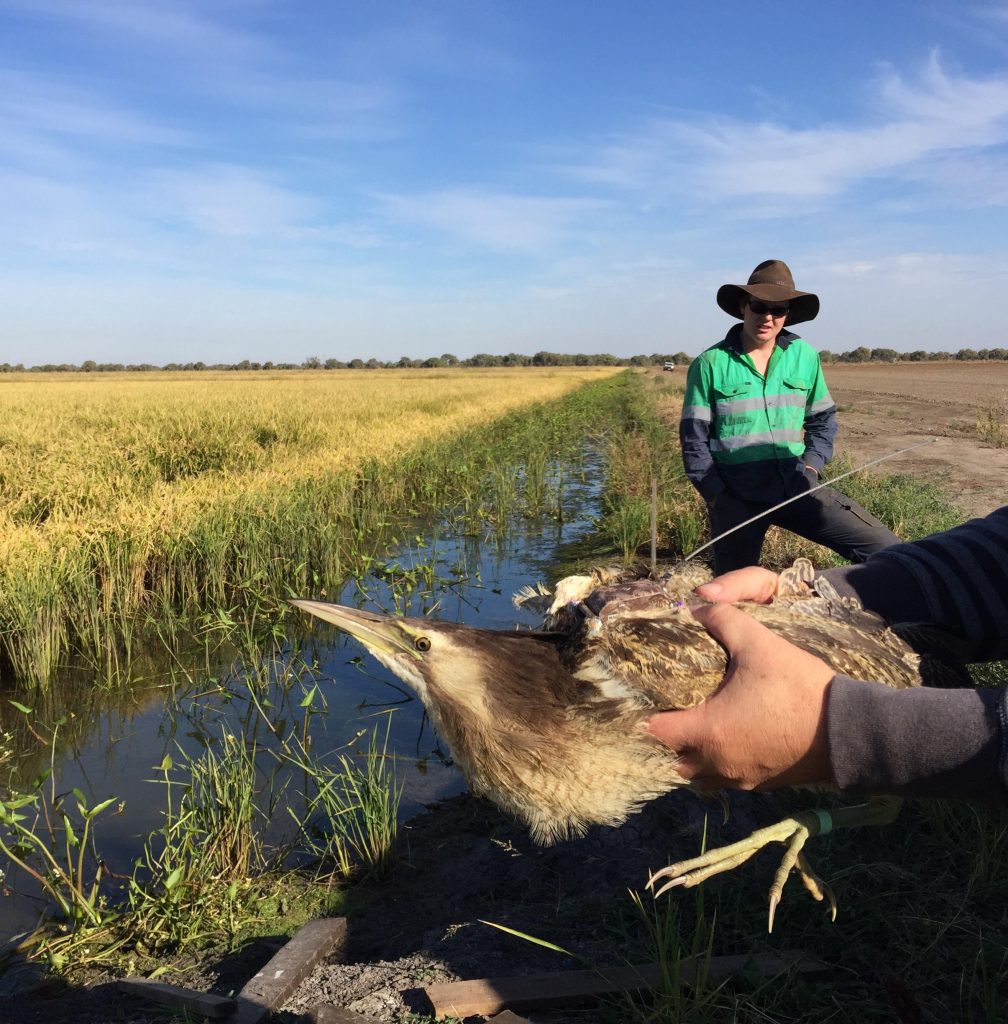 Meet Arnold, a young male from Coleambally. He is set to disperse, as his rice crop dries and is harvested. A bunch of locals got to witness his release.
Meet Arnold, a young male from Coleambally. He is set to disperse, as his rice crop dries and is harvested. A bunch of locals got to witness his release.
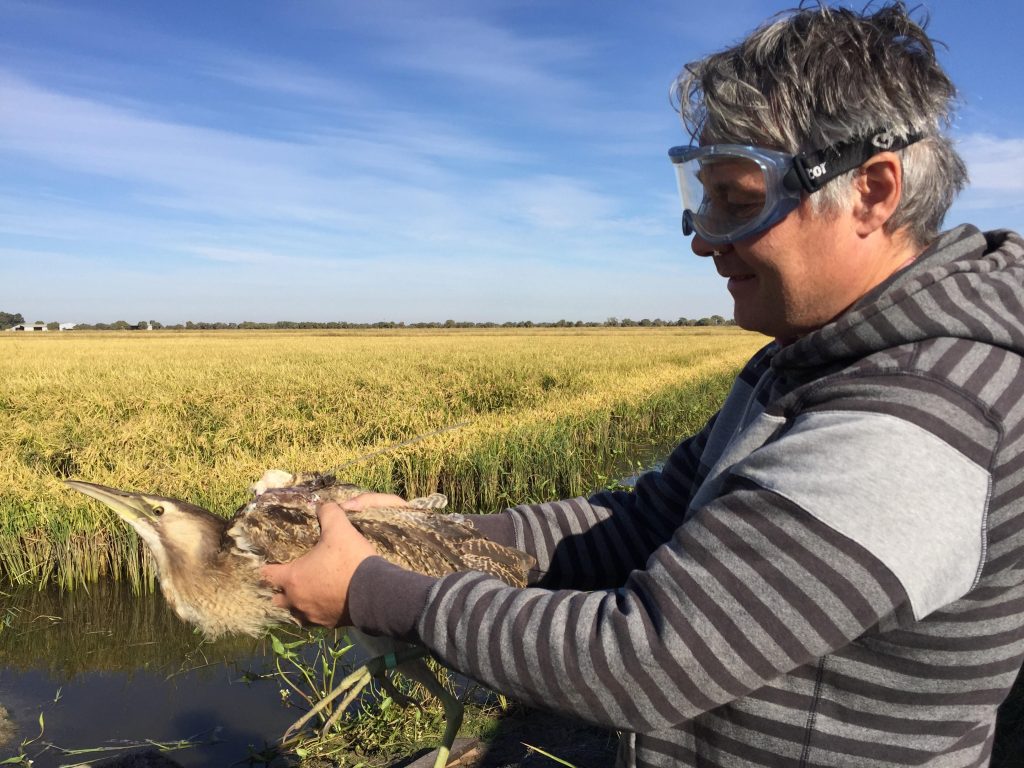 Andrew Silcocks from Birdlife Australia about to release Arnold.
Andrew Silcocks from Birdlife Australia about to release Arnold.
In other news, it was great to learn that environmental water is being delivered to Campbell’s Swamp near Griffith to coincide with bittern dispersal from the rice fields and provide a winter refuge. It’s amazing to think that hundreds of bitterns are now on the move. The first indication of dispersal from our tracked bitterns has been Demo, who recently flew 6 km from his booming territory to another rice crop. We anticipate some exciting journeys over the next few weeks.
 Campbell’s Swamp near Griffith, set to provide winter refuge for bitterns dispersing from rice fields.
Campbell’s Swamp near Griffith, set to provide winter refuge for bitterns dispersing from rice fields.
 Demo is on the move.
Demo is on the move.
Australasian Bittern breeding habitat miraculously transformed into human food. #bitternsinrice pic.twitter.com/R1nSnhr6by
— Matt Herring (@Matt_HerringOz) April 20, 2017
For the past couple of months we have been encouraging growers to delay ‘lock-up’ and drainage, where practical and even by just a few days, to increase the chances of successful breeding. At some crops, the provision of a sufficient period of inundation that allows for successful breeding is tight.
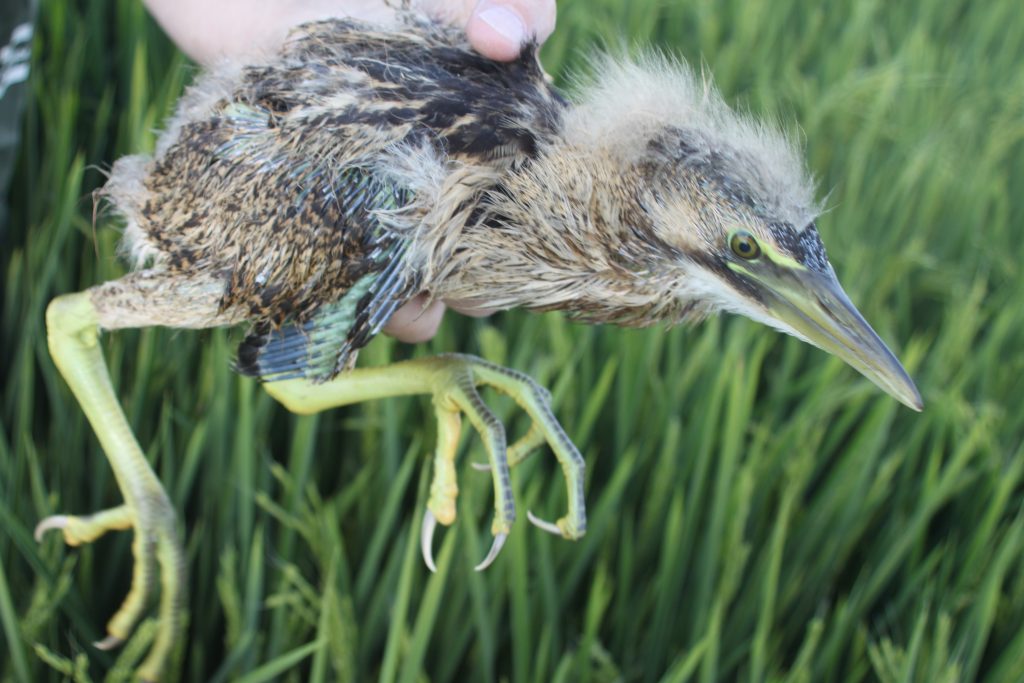 Boosting the number of fledged young (‘bittern yield’) remains a key priority for the Bitterns in Rice Project.
Boosting the number of fledged young (‘bittern yield’) remains a key priority for the Bitterns in Rice Project.
And last month we hosted Khara Strum from the Audubon Society and Kristin Sesser from Point Blue Conservation Science. In 2015 they showed us their inspiring waterbird conservation work around Californian rice farms, so it was nice to return the favour. We all attended the International Temperate Rice Conference in Griffith, which was a great success. Here’s some reflections from Khara on her visit: Audubon Goes Down Under.
Meanwhile, Milly Formby’s crowdfunding campaign to raise money to fly a microlight from Australia to Siberia to promote migratory shorebird conservation is in its final week. Once again, please consider backing this brilliant project.
And to finish off, here’s some of the most popular recent photos posted on our Facebook page.
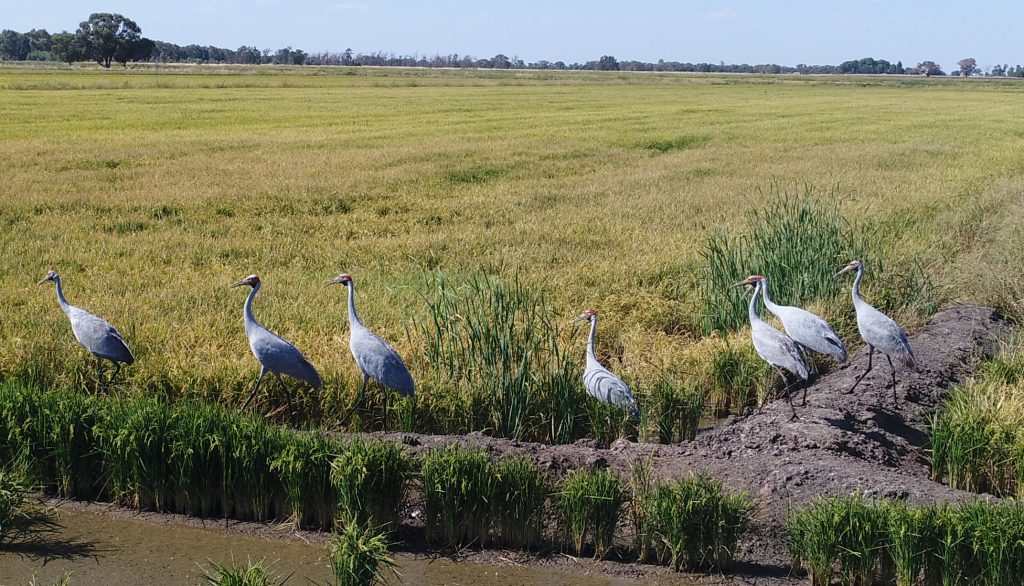 Peter Sheppard from Coleambally recently got some great images from his drone of Brolgas on his rice farm. You can read more about Brolgas and their use of rice fields in the latest Farmers’ Newsletter.
Peter Sheppard from Coleambally recently got some great images from his drone of Brolgas on his rice farm. You can read more about Brolgas and their use of rice fields in the latest Farmers’ Newsletter.
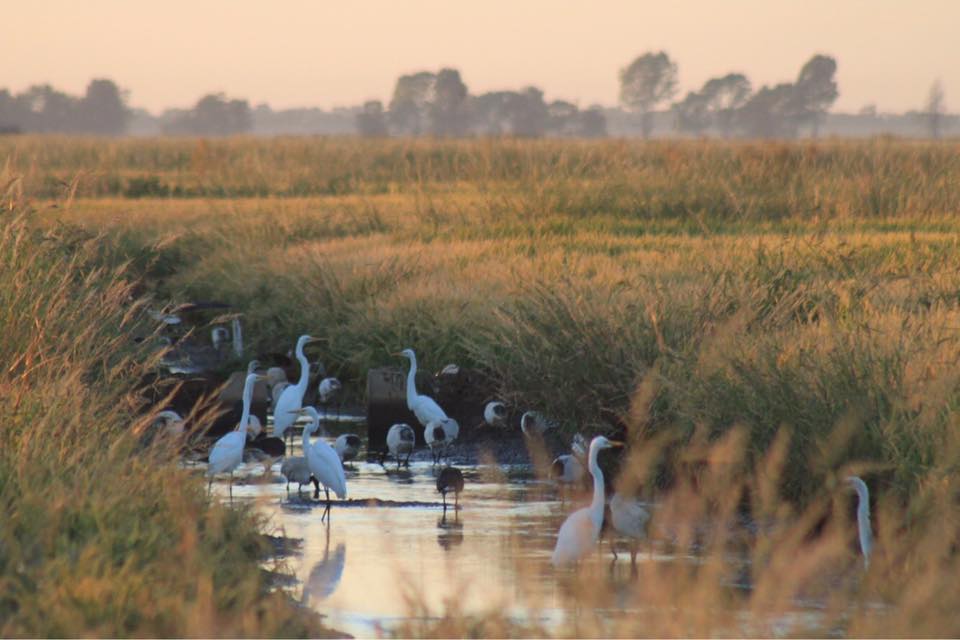
Water pools
Harvest approaches
Prey concentrates
Waterbirds follow suit
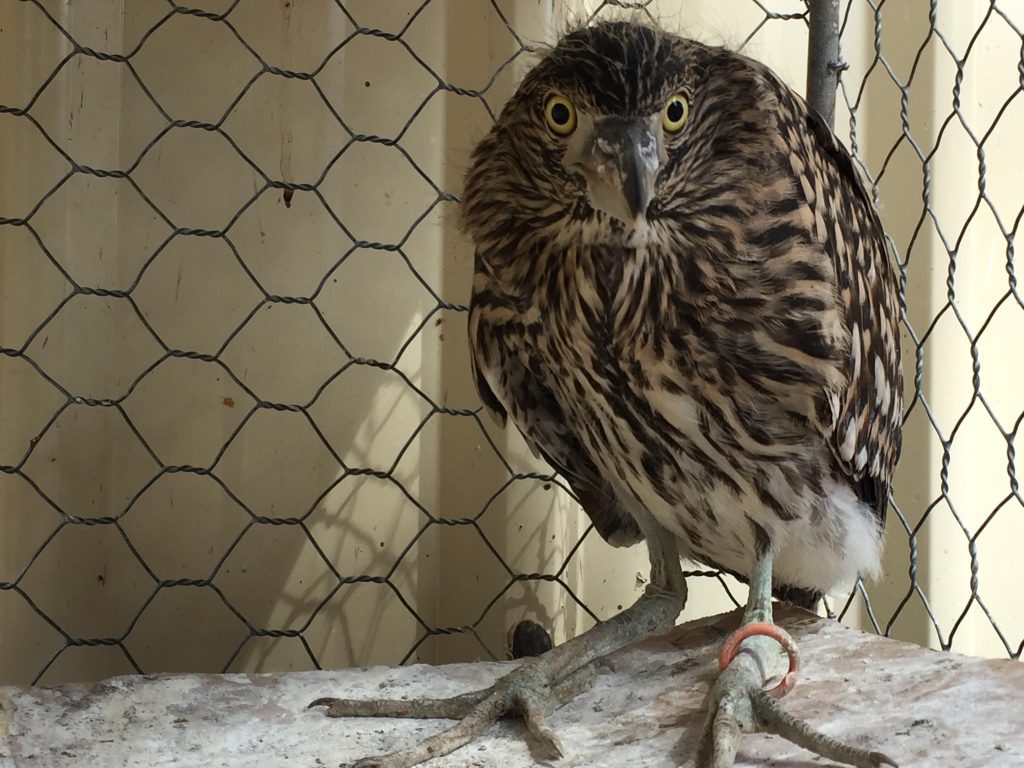 During March, Coleambally Central School cared for Nankeen Night-heron chicks that had fallen out of their nests at the local breeding colony.
During March, Coleambally Central School cared for Nankeen Night-heron chicks that had fallen out of their nests at the local breeding colony.
 In New Zealand, eels are known to be an important food source for Australasian Bitterns. This fabulous photo is by Imogen Warren.
In New Zealand, eels are known to be an important food source for Australasian Bitterns. This fabulous photo is by Imogen Warren.

[…] these insights unfold is a joy. Three weeks ago, Arnold departed the rice field where we found him in April. He’s a young bird, reminiscent of Robbie […]